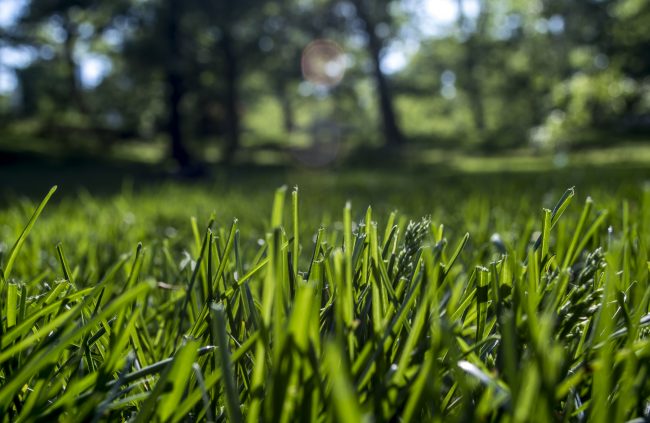
Lawns are a matter of pride for the 3 out of 4 homeowners that have them in the US. Keeping the edges neat and tidy, the blades of grass fresh and healthy looking, avoiding pests and insects making ugly hills, and keeping the grass trimmed, is all part and parcel of maintaining a beautiful lawn. For some homeowners, a lawn is something to be treasured because it represents their very own green space and plot of land, to raise children on, to entertain guests on, to maintain and look after as part of their treasured estate. Lawns are extremely important to many of us, for many different reasons, which is exactly why lawn care is such a high priority for lawn owners. After all, a lawn cannot maintain itself, so if the rewards are to continue, a lawn must be maintained well.
Lawn Facts
There is a lot more to a lawn than you might imagine, and so, a lot more to the care of a lawn than you might realise. Those taking on a lawn often only realise the true extent of lawn care once patches start turning brown, growth speeds up and slows down, and areas of baldness or weed attack begin to appear. One great way to begin caring for your lawn is to have a better understanding of what it is and what it needs. Here are some interesting lawn facts to get you started:
- Each grass plant on your lawn is up to 80% water in weight.
- The weight of a grass plant is mainly made up from its roots, nearly 90% in fact.
- The healthiest lawns absorb rainfall really well, and can absorb up to 6 times more water than an agricultural crop field.
- The average lawn, produces enough oxygen to keep a family of four alive (two adults, two children).
- The average lawn gets rid of lots of nasties naturally, such as carbon dioxide and hydrogen fluoride.
- The average lawn contains over 8 million grass plants.
- Natural lawns are better for the environment than artificial lawns as they provide natural habitats for animals and insects, produce oxygen and remove bad gases from the air, and they are biodegradable.
There is so much more to your lawn than you likely realise, and as it provides you with benefits like; stunning aesthetics, soft ground for your children to play on and your animals to walk on, oxygen production, water absorption and in many cases added value to your property, it is certainly worth understanding it, and in turn, caring for it properly so you can continue to enjoy all the benefits it brings for years to come.
Caring For Your Lawn In Summer
Although caring for your lawn is different depending on the season, in summer it is more tricky for several different reasons. Water shortages, extreme weather, insects, usage, growth and other factors all come into play during summer, which makes caring for it particularly challenging. During this season, lawns can become hot and stressed out, to the point of causing considerable damage if you’re not careful.
Luckily, despite the many threats to a lush, beautiful lawn, caring for it isn’t all that difficult, as long as you don’t mind putting the effort in when needed. Often, a good maintenance plan prevents any major issues, and maintaining is much easier than curing difficult lawn issues that can arise with a neglected area of turf.
Here are the best summer lawn maintenance tips to ensure your lawn stays beautiful all season:
Don’t Be Precious
Don’t be precious, enjoy your lawn. This may seem like an odd piece of advice, because your lawn is much more likely to sustain damage if people use it, but, why be precious over this extra land on your property that you pay for? Enjoying your lawn is the big payoff for maintaining it so well, and if you do keep up maintenance, your lawn will recover from damage quickly and easily anyway so, you can’t really go wrong. The only thing you should do is avoid areas that are damaged until they recover. For example; if there has been a lot of rain and you have a muddy patch, add repair turf to the patch and then let it recover.
Ensure You Mow A Lot
It seems like you’re mowing everyday in summer doesn’t it? The lawn grows so quickly, it can be tempting to neglect the mowing, but it is a really important job. It is better to mow more regularly, than to mow the grass really short when it is very hot. Mowing keeps the grass looking good, it promotes new growth and ensures better drainage, aeration and helps prevent shade dwelling weeds thriving and destroying turf.
Feed Your Lawn
Lawn feeds are essential to help nature do its best job. Lawn feeds are usually applied after mowing and help to keep your turf strong, keep it bright and lush, and helps to protect the lawn against the hot conditions. Lawn feed is only usually required during the summer months.
Use The Best Products & Tools
When it comes to lawn care, if you want the best out of your lawn, use the best products on it. With tools, it pays to pay more for good quality products that will work well time and time again. Your reel mower is especially important, especially during heavy usage times like summer so ensure you do your research and get the best for your money. With things like lawn feeder and insecticides if you can opt for natural before chemical that is best for the environment. With things like grass seed, opt for a seed relevant to your climate. IE if you live in a drought prone area, opt for a drought resilient grass seed.
Deal With Weeds
Weeds are a nuisance with lawns and cause unsightly lumps and bumps, and a break in the grass. It pays to educate yourself on the different types of lawn weeds and what to do with them. If you take a picture, your local hardware store can advise on the best type of approach to killing the weeds. It might be you need more than one application,and you might need a different approach if the weeds indicate an insect issue under the ground.
Treat New Lawns With Kid Gloves
New lawns need nurturing whilst they become established. In summer the biggest threat to new lawns is dry spells. To avoid issues during these hot dry periods of the season, soak the lawn thoroughly when the sun has gone down in the evening, to avoid scorching. Ensure the water has soaked through into the roots, as watering on the surface encourages the roots to come to the surface which is something to avoid.
Wait Till Autumn To Sow A New Lawn
If you want a new lawn, don’t sow it in summer as the soil will be too hard and dry to promote growth. Sow in Autumn for the best chance of starting a great lawn. You can of course start planning it in summer though.
Dealing With Droughts
In areas prone to droughts, it is so important to understand how your lawn will respond to the weather, and how to help it cope with the conditions. In most situations, your lawn is likely to go brown. This is not something to worry about, as when the conditions improve, it will turn green again, as long as you have cared for it in the meantime by:-
- Keeping your grass mowed to around 4 inches to ensure you are encouraging a deep root system that utilises water in the soil. This height of grass also provides more shade for the roots, keeping them cooler and a cooler lawn needs less water.
- Plan how to use water so you are doing so responsibly. Some people choose to avoid watering at all during a drought and let nature run its course. You might choose to water yourself, in which case always opt for manual watering so you can physically see everything is getting water. Water after the sun has gone down to avoid scorching.
- Accept that the grass may well turn brown, and that is OK. Grass understands its environment and if it goes brown it doesn’t mean it is dead, it just means it is shutting down certain processes to preserve itself.
Hopefully, you now feel completely prepared for a wonderful summer maintaining and enjoying your luscious lawn. Remember, with lawns it really is a case of the more you put in, the more you get out. Getting to know your lawn really will bring you many rewards that you and your family can enjoy for many years to come.







I found the list of lawn facts very interesting. I don’t much think about it outside of how fast it grows in the spring and summer!